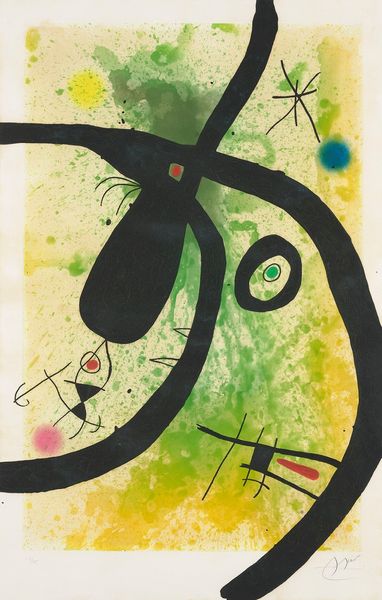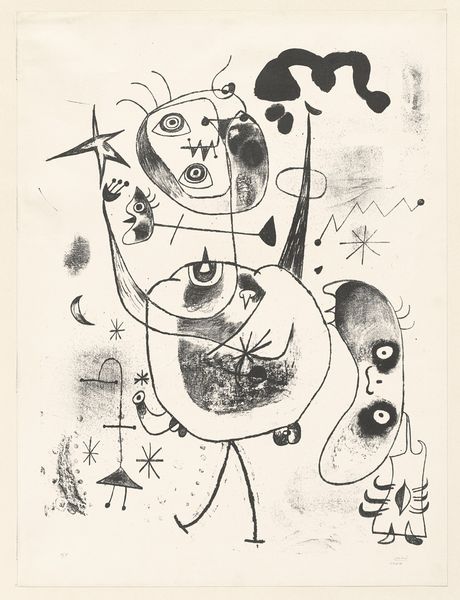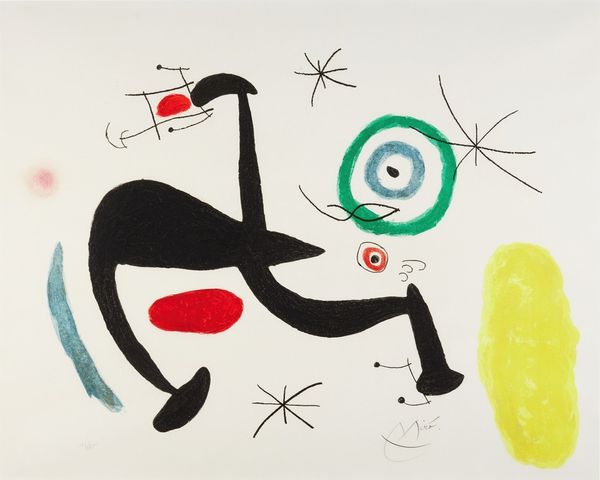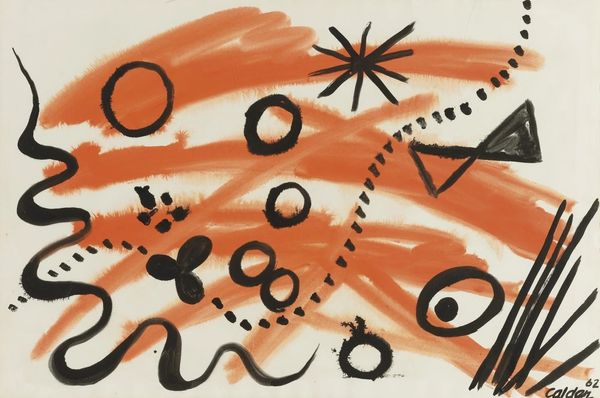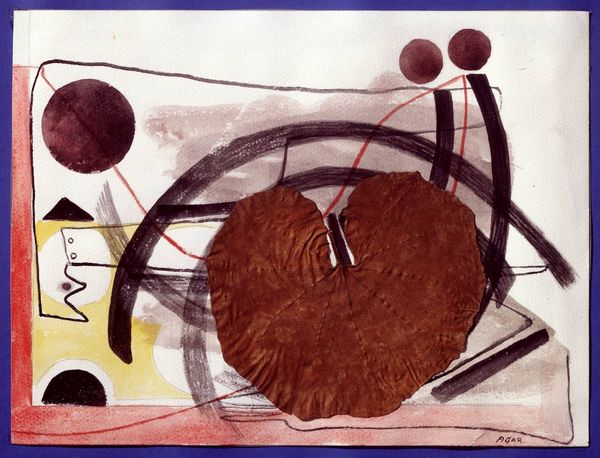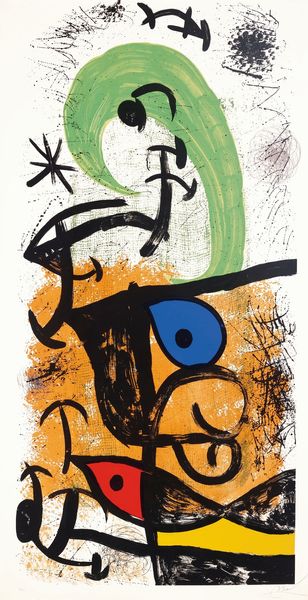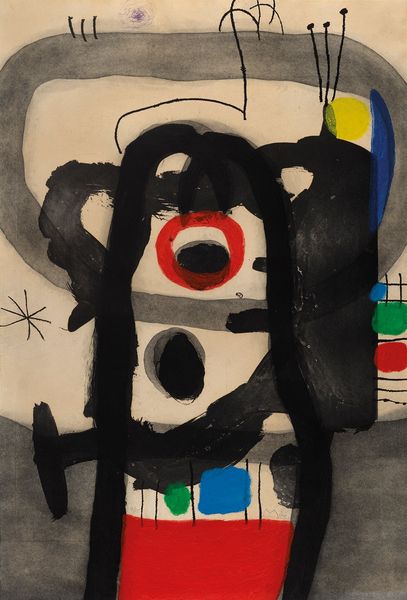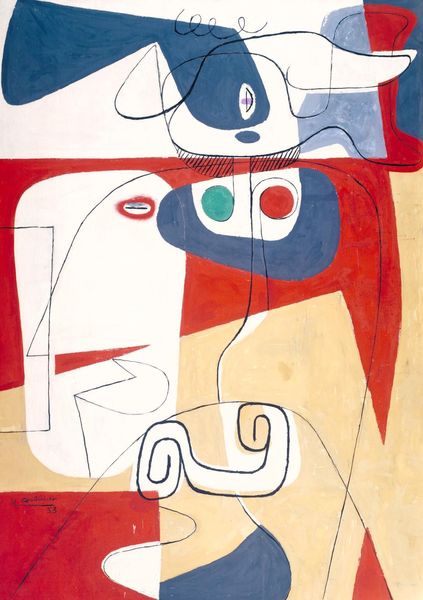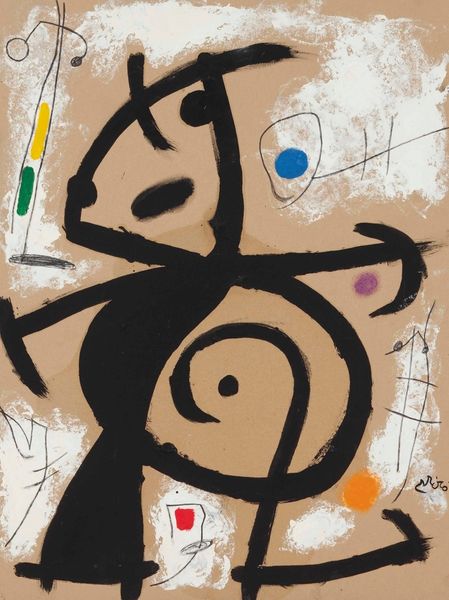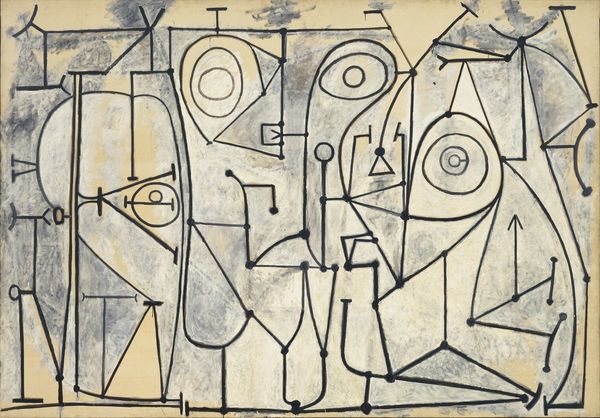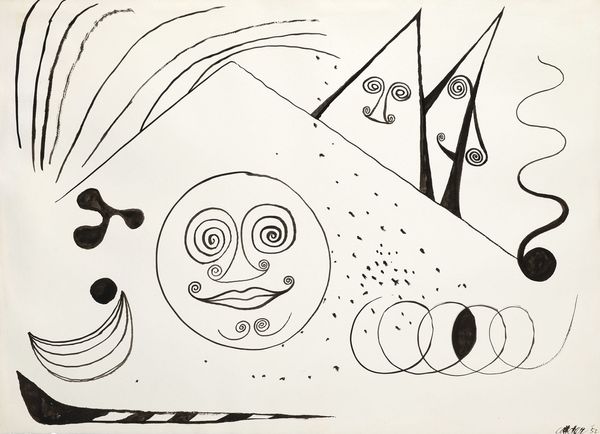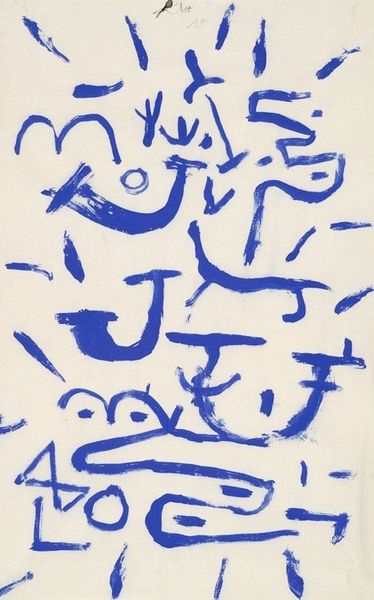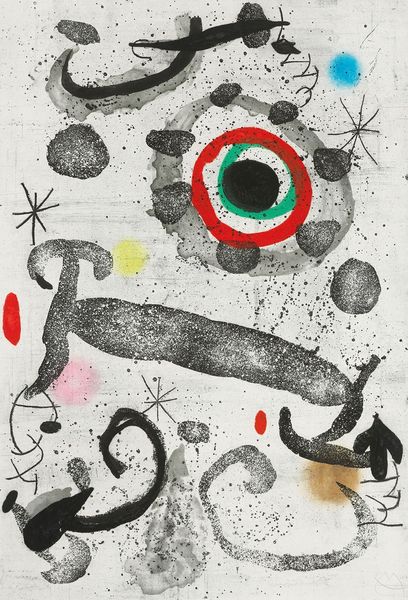
watercolor, impasto
#
figuration
#
abstract
#
form
#
watercolor
#
impasto
#
line
#
surrealism
#
modernism
#
watercolor
Copyright: Modern Artists: Artvee
Curator: Here we have Joan Miró's "Graphisme Concret" from 1952. It's a striking example of his abstract surrealist style, rendered with watercolor and touches of impasto. Editor: It certainly strikes a playful tone. The stark black lines against the cream backdrop create a visual rhythm. I'm drawn to the circle with its almost cartoonish eyes—it gives the composition a focal point, but its lightness suggests movement. Curator: Absolutely, and seeing as this was made during the Franco regime in Spain, it is worth considering how Miró’s abstract vocabulary worked as a subversive means of expression. Consider how figuration offered artists like him to express their discomfort without directly alluding to real life. Editor: I appreciate that perspective, and looking closely, the balance of the composition seems deliberately disrupted, pushing against conventional harmony. The impasto application of watercolor, too, gives the work a tactile quality at odds with its apparent simplicity, further adding to its visual depth. Curator: And don't overlook the use of line, or perhaps its deconstruction. Lines form symbols and abstract shapes that almost suggest an unknown alphabet or script. This echoes the political urgency of searching for alternative communication amidst suppression. Editor: You're right, it evokes that feeling of clandestine messaging. The recurring motif of the circle containing a face gives it a universal aspect, reminding one of identity. Its abstracted features can signify the distortion of truth and humanity in turbulent socio-political times. Curator: I'm particularly struck by how, despite its abstraction, we project a narrative. Perhaps one centered around resistance or survival, even with whimsical aesthetic qualities. Editor: Indeed, the dialogue between form and socio-political context invites endless exploration. It demonstrates the capability of abstract art not just to express the interior, but to externalize deep communal struggles. Curator: Agreed. It offers us a window into understanding historical undertones, highlighting Miró’s commitment as an artist and citizen. Editor: A fascinating piece indeed, urging us to look beyond the playful facade and uncover the socio-political depth woven within its form.
Comments
No comments
Be the first to comment and join the conversation on the ultimate creative platform.
